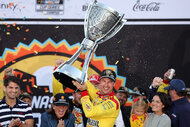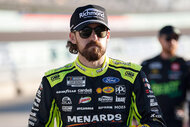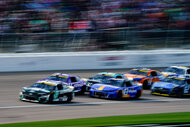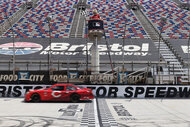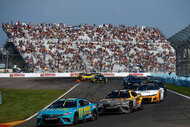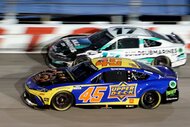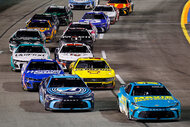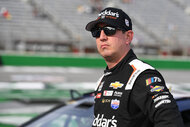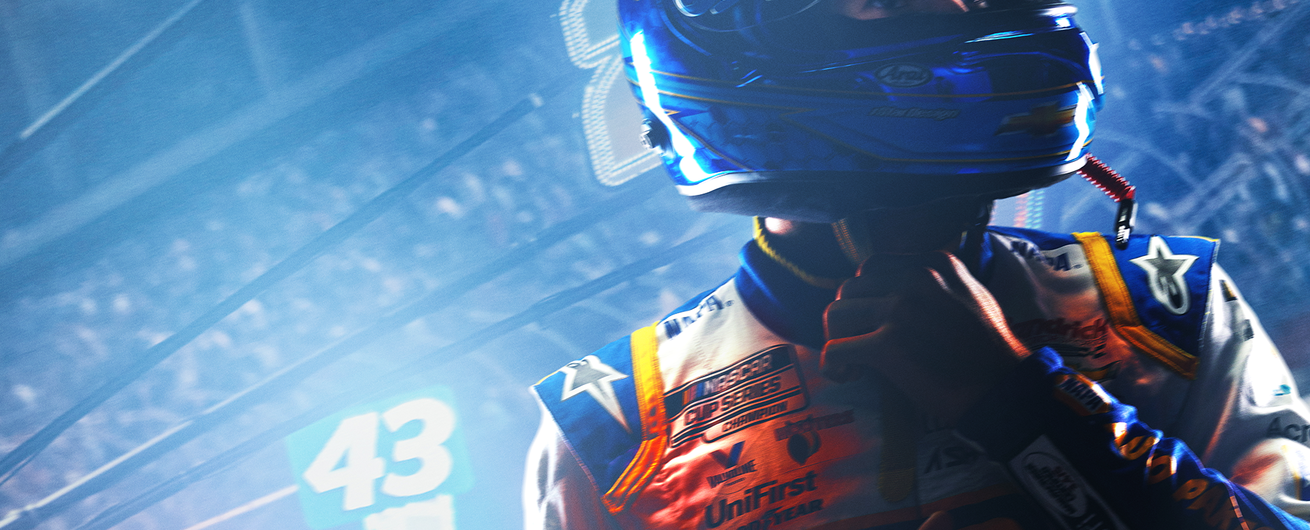NASCAR Reveals Why Chicago Cup Series Race Was Shortened
The unprecedented decision derailed Christopher Bell’s dominant day that saw him lead a race-high 37 laps.

A quarter of the way through the Grant Park 220 in Chicago, Christopher Bell’s chances of capturing the checkered flag were looking pretty good, but shortly after the midway point of NASCAR’s much anticipated inaugural Chicago Street Race – one that nearly never happened due to record-setting rainfall that ended the Xfinity race early the day before – darkness swept over the Windy City, compelling the league to make yet another unprecedented decision to shorten the Cup Series race from 100 laps to 75.
did NASCAR’s decision to shorten the Grant Park 220 affect the race?
NASCAR’s decision to clip a quarter of the total amount of laps in its Chicago Cup Series street race generated a major shift in strategy in that drivers who had pitted in previous cautions could stretch their fuel reserves to power them across the finish line. This unfortunately was not the case for Bell, who won both stages. Along with the other frontrunners who pitted upon the conclusion of Stage 2, Bell was forced to restart in the 12th position, ultimately hindering his ability to move back up through the pack.
Infuriated with the call to end the race early, per Racing News, Bell’s crew chief Adam Stevens came over the radio after the call was announced, saying, “Well, there it is – they f--ked us.”
What was the response to NASCAR shortening the Chicago Cup Series race?
Though the league has shortened races before in the past due to a lack of available natural light, fans criticized NASCAR on its timing, saying its decision cast an unfair advantage on those who had pitted earlier.
Justin Haley, who finished second, and Chase Elliott, who landed in third place, were two of the drivers who boomeranged up the ranks, garnering significant track position after pitting just prior to NASCAR handing down its decision. In fact, according to Motorsport, half of the wheelmen who finished in the top 10 scored a big boost by the league’s decision. Others were clearly hampered by it, like Bell who, despite leading for 37 laps, finished in a disappointing 18th place.
How has NASCAR responded to the criticism?
In a continued effort to be transparent with fans and other stakeholders, Steve O’Donnell, NASCAR’s Chief Operating Officer, detailed how the league reached its decision and why it was made at the time.
"Yeah, I would say there was a lot of thought put into that decision," O'Donnell revealed, according to Motorsport. "At the time we made it, we waited as long as possible to see if we could get all 100 laps in. When we knew that wasn't possible, we waited, we closed pit road. We wanted to make sure everybody knew what the race distance was going to be. Everyone had a chance to come in, pit the car, get fuel. We wanted to take fuel mileage out of it.”
"I think we've had conversations with some who may have thought it was unfair who pitted on the same lap that the leader did and won,” continued O’Donnell. "I think we're more than comfortable with the way the decision (that) was made in this case. Certainly, it can be second-guessed anytime you have to do this, but I feel like the process played out well. Would have liked to get all 100, but we wanted to be as fair as possible for the fans and also not put ourselves in a position where we're getting questions of ‘Why are you racing in the dark?’”
Speaking via Sirius XM NASCAR Radio, Elton Sawyer, senior vice president of competition, also weighed in on the decision to shorten the Chicago Cup Series race.
“We would have preferred to have made the call on lap 5 or lap 10,” Sawyer explained. “That just wasn’t possible due to the fact that we didn’t have lap times or the data and information to make that decision. As we got closer to that … what we did not want to do was be in the middle a fuel mileage situation. We didn’t want to drive the teams to come up short on fuel. We as a sanctioning body wanted to stay out of that.”
“When we made the decision at lap 45 or 46. … It gave every team the opportunity to pit, knowing they were on a 39-40 lap fuel window,” Sawyer added. “The teams that pitted on lap 46, Shane [van Gisbergen] and that team pitted on lap 46, they were able to win the race.”
“We had a couple teams that we explained that to, after the race. Didn’t expect them to be any happier with that, but at least we explained it from the league’s perspective, of what we had to do at that time.”







